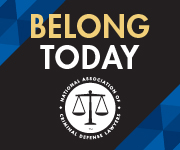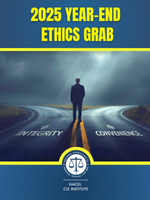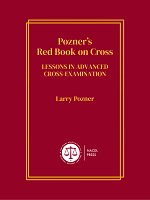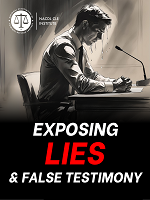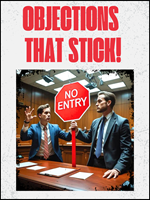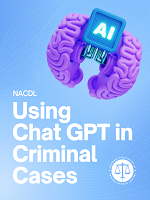Access to The Champion archive is one of many exclusive member benefits. It’s normally restricted to just NACDL members. However, this content, and others like it, is available to everyone in order to educate the public on why criminal justice reform is a necessity.
In 1986, the U.S. Supreme Court held in Batson v. Kentucky that it violates the Equal Protection Clause of the Fourteenth Amendment to use a peremptory challenge during jury selection to remove a potential juror because of race.1 The Court has explained that it established this rule because discrimination in jury selection on grounds of race “causes harm to the litigants, the community, and the individual jurors who were wrongfully excluded from participation in the judicial process.”2 But the Supreme Court’s promise in Batson, while admirable in theory, has, so far, been frequently ignored by state appellate courts.
Nowhere is this more evident than in North Carolina. The North Carolina state appellate courts have done nothing to prevent prosecutors from striking minority jurors based on race. In 30 years, and in over 100 cases raising the Batson issue, the courts of appeals in North Carolina have never reversed a case because of discrimination against a minority juror. Remarkably, North Carolina is the only state in the American South with such a stark record of indifference to racial bias in jury selection.
This indifference is not merely a theoretical matter for professors to complain about in law review articles. Time after time, studies have shown the importance of racially diverse juries. Most recently, research has demonstrated that juries with two or more members of color deliberate longer, discuss a wider range of evidence, and collectively are more accurate in their statements about cases, regardless of the race of the defendant.3
The indifference of appellate courts in North Carolina and elsewhere has another, very real effect. It delegitimizes the justice system in the eyes of minority citizens. Consider the North Carolina capital trial of Quintel Augustine, an African American man who was sentenced to death in 2002 for shooting a police officer. Augustine’s mother, Tawana Choate, sat in the courtroom as the prosecutor used peremptory strikes one after another to remove each of the five black jurors who had been called for jury duty.
Ten years after her son’s capital trial, Ms. Choate sat in the courtroom again during a hearing under North Carolina’s Racial Justice Act, a state law permitting the use of statistical evidence to show racial bias in death penalty cases.4 She learned then of statistical patterns of discrimination in her son’s case and across North Carolina. She heard that one of her son’s prosecutors went to a training course designed to teach assistant district attorneys how to dismiss jurors of color and get away with it. Ms. Choate also learned how, before her son’s trial, one of the prosecutors made extensive notes to help him keep black citizens off the jury, notes that described black jurors as “thugs” and “winos.” After the hearing, Ms. Choate said, “It hurt my heart to hear that evidence of racism. … I don’t understand why African Americans can’t serve on juries just like white people.”5
Quintel Augustine’s claims under the Racial Justice Act are now pending before the North Carolina Supreme Court. Ms. Choate eagerly awaits the outcome. As the U.S. Supreme Court has predicted, for Ms. Choate, race discrimination in the selection of her son’s jurors has “mar[red] the integrity of the judicial system.”6 She simply cannot understand why prosecutors continue to deny African Americans the same chance to serve on juries as white citizens and why the North Carolina appellate courts do not intervene. “The presence of racial bias in the justice system is central to the concerns of people of color precisely because our society defines itself by a commitment to law and fairness.”7
With the supreme court in North Carolina poised to revisit the issue of jury discrimination, this seems an appropriate time to reflect on what the U.S. Supreme Court’s three-decade-old decision in Batson has meant for African American citizens and other persons of color across the country, and what state appellate courts in North Carolina and beyond can do to address more effectively this stubborn ongoing problem.
States Strengthening the Batson Framework
A number of state appellate courts have responded to the challenge by experimenting with new ways to strengthen the Batson framework. Indeed, in Batson itself, the Supreme Court left it to states and lower federal courts to determine “how best to implement [the] holding” and “to formulate particular procedures to be followed upon a defendant’s timely objection to a prosecutor’s challenges.”8
In a 2017 decision, for example, the Supreme Court of Washington adopted a rule that “the trial court must recognize a prima facie case of discriminatory purpose when the sole member of a racially cognizable group has been struck from the jury.”9 The court had previously acknowledged the difficulty of applying Batson because, while “racism itself has changed, … implicit biases … endure despite our best efforts to eliminate them. Racism now lives not in the open, but beneath the surface. …”10 The Washington court concluded it must “strengthen [its] Batson protections” and observed it had the ability to do so because “[t]he Batson framework anticipates that state procedures will vary, explicitly granting states flexibility to fulfill the promise of equal protection.”11 In its 2017 decision, the Washington court emphasized its ongoing concern that the court’s “Batson protections are not robust enough to effectively combat racial discrimination during jury selection.”12
In 2018, the Washington court took further bold action to address its concerns about Batson. The court used its rulemaking authority to issue a first-of-its-kind rule that goes beyond Batson to provide greater protection against discriminatory peremptory strikes. The Washington rule retains Batson’s three-step process of the moving party’s objection, the prosecutor’s race-neutral explanation, and the trial court’s ruling under the totality of circumstances. It diverges from Batson, however, by eliminating the requirement to show purposeful discrimination. Instead, the new rule disallows a strike if “an objective observer could view race or ethnicity as a factor.” The rule defines an “objective observer” as a person who is aware of “implicit, institutional, and unconscious biases.” In addition to incorporating implicit bias, the Washington rule is groundbreaking in another important way. It presumes that a strike is invalid or requires advance notice about the explanation for its use, for common reasons that have often been accepted by courts but correlate strongly with race. These include such reasons as prior contact with law enforcement, distrust of law enforcement due to racial profiling, living in a high-crime neighborhood, or having an objectionable demeanor.13
In California, in a concurring opinion in a 2017 case finding a Batson violation, Justice Goodwin H. Liu of the state supreme court described a similarly unique approach to Batson that provides meaningful oversight of prosecutors while also eschewing demonization of these public officials, who typically discharge their duties in good faith. Justice Liu wrote that Batson is only a “probabilistic standard” which “is not designed to elicit a definitive finding of deceit or racism,” but rather “defines a level of risk that courts cannot tolerate.” Justice Liu explained that “the finding of a violation should [not] brand the prosecutor a liar or a bigot. Such loaded terms obscure the systemic values that the constitutional prohibition on racial discrimination in jury selection is designed to serve.”14
In Nevada, the state supreme court reversed four cases in just four years on Batson grounds after detecting a pattern concerning jury selection practices in Clark County, which includes Las Vegas.15 Three of those cases were capital. In its 2014 reversal, the Supreme Court of Nevada wrote that “[d]iscriminatory jury selection is particularly concerning in capital cases where each juror has the power to decide whether the defendant is deserving of the ultimate penalty, death.”16 These four Nevada cases are also remarkable for what they are not: examples of a state court taking strong action only in the face of blatant or explicit discrimination. The Nevada decisions reflect a state appellate court taking seriously its duty to reverse convictions even when the Batson violations are not revealed by explicitly racist or biased statements, but by a closer look at records which demonstrated that prosecutors accepted certain characteristics in white jurors while simultaneously relying on those same attributes to justify striking minority jurors.
In contexts related to but distinct from Batson, other state courts have tried to modernize their approaches to implicit bias in the courtroom. The Supreme Court of Iowa acknowledged, in a 2017 decision, the “general agreement that courts should address the problem of implicit bias in the courtroom.” The court “strongly encourage[d] district courts to be proactive about addressing implicit bias,” and approved an antidiscrimination jury instruction for that purpose. The court also changed its method for determining whether the racial composition of the jury pool violated the right to a jury drawn from a fair cross-section of the community. The Iowa court explained that its prior approach was “[a] test without teeth [that] leaves the right to an impartial jury for some minority populations without protection.”17
In yet another 2017 decision, the District of Columbia Court of Appeals held that it was error for a trial court to excuse a potential black juror for cause simply because she believed the criminal justice system has a systemic bias against black men, especially when the juror indicated she could set that belief aside and remain impartial.18 The appellate court explained that this error required reversal, in part, because it would actually be beneficial to the deliberative process to include jurors who “doubt the racial fairness of the criminal justice system,” a subject the court described as an “important matter[ ] of legitimate public debate.”19
North Carolina: A Stark Outlier
In contrast to these forward-thinking courts, the appellate courts in North Carolina have not assumed a leadership role in addressing explicit racial bias, let alone implicit bias, in the selection of juries. The history of these issues in North Carolina shows how indispensable leadership from appellate courts can be, and the damage caused by their apparent indifference.
A 2016 study published in the North Carolina Law Review revealed that, in the three decades since Batson was decided, the North Carolina Supreme Court has never found a single instance of discrimination against a minority juror.20 Nor has the North Carolina Court of Appeals ever found discrimination against a minority juror under Batson.21 Remarkably, North Carolina is the only state in the entire South in which an appellate court has never in 30 years recognized peremptory strike discrimination against a minority juror.22 “Statistics are not, of course, the whole answer, but nothing is as emphatic as zero. …”23
In a state where people of color comprise a third of the population, and whose history is rife with race discrimination, it is nothing short of stunning that North Carolina’s appellate courts have failed to discern even a single instance of racial bias in jury selection.
Among southern states, North Carolina is a stark outlier in its failure to enforce Batson. Appellate courts in South Carolina have found at least a dozen Batson violations since 1989, and those in Virginia have found at least six.24 As of 2010, Alabama had over 80 appellate reversals because of racially tainted jury selection, Florida had 33, Mississippi and Arkansas each had 10, Louisiana had 12, and Georgia had eight.25
To make matters worse, the North Carolina appellate courts ironically have found Batson violations when the defendants were African American and the jurors struck were white. In two cases, the appellate court found discrimination not against African Americans, who have historically been excluded from jury service, but against white citizens.26
Common sense tells us what happens when a government authority never enforces violations of a law. How many people would follow the speed limit if they knew the police would never pull them over to issue a ticket? This is precisely why appellate courts should, and often do, reverse criminal convictions for constitutional violations, for example, when a prosecutor fails to turn over exculpatory evidence to the defense. In these instances, appellate reversals function as a powerful and important incentive for state actors to adhere to the law. The Supreme Court has explained that by reversing convictions when constitutional rules are violated, the courts “compel respect for the constitutional guaranty in the only effectively available way — by removing the incentive to disregard it.”27 In North Carolina, then, the appellate courts’ failure to enforce Batson has predictably led to prosecutorial disregard of Batson and frequent discrimination against minority jurors at the trial level.
This discrimination was demonstrated in a comprehensive study by Michigan State University College of Law researchers that analyzed more than 7,400 peremptory strikes made by North Carolina prosecutors in 173 capital cases tried between 1990 and 2010.28 The study showed prosecutors struck 53 percent of eligible African American jurors and only 26 percent of all other eligible jurors in those capital proceedings.29 The researchers found that the probability of this disparity occurring in a race-neutral jury selection was less than one in 10 trillion.30 After adjusting for nonracial characteristics that might reasonably explain strike decisions, for example, reluctance to impose the death penalty, researchers found prosecutors struck black jurors at 2.5 times the rate they struck all other jurors.31
Another study showed that as of 2010, 20 percent of the 150 prisoners on North Carolina’s death row were sentenced to death by all-white juries. This disparity occurred even though people of color comprise nearly a third of North Carolina’s population.32
The same troubling racial disparities have been found in noncapital cases as well. A recent study conducted at the Wake Forest University School of Law released preliminary findings that in all noncapital felony trials in North Carolina from 2011 to 2012 — which included data on 29,000 potential jurors — prosecutors struck nonwhite potential jurors at a disproportionate rate. In these cases, prosecutors struck 16 percent of nonwhite potential jurors, while they struck only eight percent of white potential jurors. Put another way, this study of 29,000 jurors found that prosecutors excluded black and other nonwhite jurors at twice the rate they excluded white jurors. The Wake Forest study also found that in several large North Carolina cities, prosecutors excluded minority jurors nearly three times as often as white jurors.33
Nor is evidence of jury-race discrimination in North Carolina limited to statistics. In the 2002 capital case of State v. Augustine, discussed in the introduction, the prosecutor met with law enforcement officers and took notes about the jury pool. His notes described African American prospective jurors in racial terms such as “blk. wino” or being from a “respectable blk family.” Another juror had the words “blk./high drug area” written next to her name.34
In a 1997 Martin County case, a prosecutor, evoking imagery of southern lynchings, noted that a white juror was “good” because she would “bring her own rope.” Yet another white juror was marked with a “No” because, according to the prosecutor’s notes, she had a child by a “BM,” or black male.35
In a 1994 Davie County case, a prosecutor in a capital murder trial stood accused of striking a black potential juror because of her race. Asked to explain his reasons for the peremptory strike, the prosecutor told the judge, “The victim is a black female. That juror is a black female. I left one black person on the jury already.” The trial judge accepted this reasoning and overruled the Batson objection.36
There is evidence that some of these individual prosecutors may be following office-wide policies when discriminating against black jurors. At a 1994 seminar called Top Gun, prosecutors were given a list of race-neutral reasons to cite when Batson challenges were raised. This list, titled “Batson Justifications,” included “attitude,” “body language,” and a “lack of eye contact with prosecutor” — the types of justifications that prosecutors routinely give for striking black jurors in North Carolina. In an amicus brief submitted to the U.S. Supreme Court, former prosecutors described this as “district attorney offices train[ing] their prosecutors to deceive judges as to their true motivations.”37 One state appellate court went so far as to call the Batson process a “charade” when these types of “pat race-neutral reasons” are used.38
Opportunities to Change Course
North Carolina is an instructive example of how the U.S. Supreme Court’s promise in Batson can go unfulfilled when there is lax or no enforcement by lower courts. But what is happening in North Carolina is not inevitable, even if one believes that Batson itself is an imperfect tool. As appellate courts in Washington, California, Iowa, and the District of Columbia have shown, inherent in the principles underlying Batson are many opportunities to change course.
The North Carolina Supreme Court, for example, is currently considering cases that raise the question whether new evidence discovered by the Michigan State study of North Carolina capital cases may form the basis for otherwise procedurally defaulted Batson violations raised by death row inmates. The state supreme court is also considering cases that ask whether death row inmates who raised and presented evidence on state law-based claims of systemic bias in jury selection will get the opportunity to present that evidence in court, despite the fact that the legislature repealed the statute after the claims were filed, and after a trial court actually granted relief to some of the defendants following hotly contested evidentiary hearings.39 Both of these issues present the North Carolina Supreme Court with an opportunity to allow evidence of racial bias to be fairly addressed in the trial courts. Other state courts could likewise permit re-examination of Batson claims where new studies and new methods of analysis reveal discrimination in older cases, particularly those involving the death penalty.
The North Carolina appellate courts, like others, also have an opportunity to modify their Batson jurisprudence in order to avoid the crippling burden of proof that Batson itself was meant to alleviate. For example, North Carolina courts could end their practice of declining to find a prima facie case of discrimination under Batson, even when prosecutors strike 50 percent or more of the qualified jurors of color. In two cases, the North Carolina Supreme Court refused to find a prima facie case even when prosecutors struck 100 percent of the minority jurors.40 In several other instances, the court failed to find a prima facie case when 70 percent were struck.41
Similarly, the North Carolina appellate courts could end their practice of rejecting Batson claims even where apparently race-neutral reasons are accompanied by racially pretextual ones. For example, in a 1998 capital case, on a record of three clearly discredited reasons that had been rejected by the trial court, the state supreme court declined to find a Batson violation because it concluded that one of the three reasons might withstand scrutiny.42
In still other cases, the state supreme court in North Carolina has rejected Batson claims when the reasons given for the strike were irrational, such as the juror being physically attractive;43 where the reasons for the strike were only offered by the appellate court, and not the prosecutor;44 where the court refused to consider that white jurors were not struck by the State despite similarities to black jurors who were;45 and where the prosecutor offered subjective characterizations of black jurors’ demeanor, such as sitting with arms crossed, having an “air of defiance,” or not having a “good sense of herself.”46 Ending these practices would represent substantial strides toward realizing Batson’s promise.
Reviving the promise of Batson in North Carolina and beyond is a critical component of the appellate courts’ role in safeguarding the integrity of the criminal justice system. Jury service reflects one of the most fundamental principles of American democracy: the fates of defendants lie in the hands of their fellow citizens. “[F]or most citizens the honor and privilege of jury duty is their most significant opportunity to participate in the democratic process.”47
Conclusion
The U.S. Supreme Court has acknowledged the importance of revisiting precedent when it appears it may not be robust enough to police race discrimination in jury selection. The Court created the Batson framework because the earlier legal standard for proving racially motivated jury selection had proved ineffective.48 In more recent years — 2002, 2005, and 2008 — the Court issued a series of opinions making clear that appellate courts are required to conduct a comparative analysis of jurors selected and rejected in the same case, the very same analysis that North Carolina courts previously have eschewed.49 Most recently, in the 2016 decision Foster v. Chatman, the U.S. Supreme Court reinforced the need for careful scrutiny of prosecutors’ peremptory strike decisions by finding a Batson violation even though only some of the prosecution’s reasons for its strikes were pretextual.50
To be sure, the appellate courts’ task of enforcing Batson is a difficult and sensitive one. In his recent concurring opinion, California Supreme Court Justice Liu described the challenge well, noting that “brazenly unlawful [jury selection] practices are [likely] rare today.” Justice Liu observed that appellate records “[r]arely … contain direct evidence of purposeful discrimination,” and “courts cannot discern a prosecutor’s subjective intent with anything approaching certainty.” Despite these difficulties, however, Justice Lui warned that courts must rise to the occasion “in light of the serious harms” discrimination in jury selection can cause to litigants, the public, and the public’s confidence in the justice system.51
In future cases, state appellate courts must not hesitate to re-examine their jurisprudence and consider carefully the proper application of Batson in light of the persistence of peremptory strike discrimination and the changing nature of racial bias. By redeeming Batson’s promise — which can be achieved by strengthening Batson itself, or by recognizing new ways for lower courts to consider evidence of racial bias — appellate courts can declare to all citizens that the historic exclusion of African Americans from juries is truly receding into history. This is the only way courts can guarantee minority defendants juries of their peers and communities of color that their voices will be heard in the criminal justice system. And it is the only way appellate courts can make clear that the consideration of race in jury selection will no longer be tolerated, not just in word but in fact.
Notes
- 476 U.S. 79 (1986).
- J.E.B. v. Alabama ex rel. T.B., 511 U.S. 127, 140 (1994).
- See Jerry Kang et al., Implicit Bias in the Courtroom, 59 UCLA L. Rev. 1124, 1180 (2012) (discussing Samuel R. Sommers, On Diversity and Group Decision-Making: Identifying Multiple Effects of Racial Composition on Jury Deliberation, 90 Personality & Soc. Psychol. 597 (2006)).
- The Racial Justice Act was enacted in 2009, amended in 2012, and repealed in 2013. S.L. 2009-464; N.C. Gen. Stat. §§ 15A-2010 to 2012 (modified by S.L. 2012-136, §§ 3 and 4; and repealed by S.L. 2013-154, § 5.(a)).
- Nov. 29, 2016, Affidavit of Tawana Choate, filed in State v. Augustine, 01 CRS 65079, Cumberland County, North Carolina Superior Court.
- Edmondson v. Leesville Concrete Company, 500 U.S. 614, 628 (1991).
- Bryan A. Stevenson & Ruth E. Friedman, Deliberate Indifference: Judicial Tolerance of Racial Bias in Criminal Justice, 51 Wash. & Lee L. Rev. 509 (1994).
- 476 U.S. at 99, n.24.
- City of Seattle v. Erickson, 188 Wash. 2d 721, 733-34 (2017).
- State v. Saintcalle, 178 Wash. 2d 34, 46 (2013).
- Id. at 51.
- Erickson, 188 Wash. 2d at 733-34.
- See Washington General Rule 37. This rule is currently on the Washington Court’s webpage for rules adopted but not yet effective. Once effective, Rule 37 will be on the Washington Court’s webpage for Rules of General Application. Both pages are found at https://www.courts.wa.gov/court_rules.
- People v. Gutierrez, 2 Cal. 5th 1150, 1182-83 (2017) (Goodwin, J., concurring).
- Conner v. State, 327 P.3d 503, 507 (Nev. 2014); McCarty v. State, 371 P.3d 1002, 1006 (Nev. 2016); Sanchez v. State, No. 66964, 2016 WL 3856575 (Nev. July 14, 2016); Bradford v. State, 404 P.3d 406, 2017 WL 4838422 (Nev. 2017).
- Conner, 327 P.3d at 507.
- Iowa v. Plain, 898 N.W.2d 801, 817, 825 (Iowa 2017) (rejecting exclusive reliance on absolute disparity test for determining representativeness of a jury pool, and adopting a “flexible approach” that permits lower courts to rely on “multiple analyses … that are appropriate to the circumstances of each case”).
- Mason v. United States, 170 A.3d 182, 185 (D.C. 2017).
- Id. at 189-90.
- Daniel R. Pollitt & Brittany P. Warren, Thirty Years of Disappointment: North Carolina’s Remarkable Appellate Batson Record, 94 N.C. L. Rev. 1957 (2016).
- Id. at 1961-62.
- In one case involving minority jurors, the court of appeals found a constitutional violation, but only because the prosecutor defaulted under Batson and failed to offer any explanation whatsoever for the strikes of two African American jurors. Even though a violation was found on appeal, it was only because the prosecutor ignored the procedural rules of Batson entirely. See State v. Wright, 189 N.C. App. 346, 353-54 (2008).
- United States v. Hinds County School Board, 417 F.2d 852, 858 (5th Cir. 1969).
- Pollitt & Warren, supra note 20, at 1994-95.
- See Equal Justice Initiative, Illegal Racial Discrimination in Jury Selection: A Continuing Legacy 19, available at https://eji.org/reports/illegal-racial-discrimination-in-jury-selection. The EJI report only counted Batson reversals in criminal cases.
- Pollitt & Warren, supra note 20, at 1962-63; State v. Hurd, 784 S.E.2d 528 (N.C. App. 2016); State v. Cofield, 129 N.C. App. 268 (1998).
- Elkins v. United States, 364 U.S. 206, 217 (1960).
- See Catherine M. Grosso & Barbara O’Brien, A Stubborn Legacy: The Overwhelming Importance of Race in Jury Selection in 173 Post-Batson North Carolina Capital Trials, 97 Iowa L. Rev. 1531 (2012).
- Id. at 1549.
- Id.
- Id. at 1556.
- Seth Kotch & Robert P. Mosteller, The Racial Justice Act and the Long Struggle with Race and the Death Penalty in North Carolina, 88 N.C. L. Rev. 2031, 2110-2111, n.356 (2010).
- Ronald F. Wright, Kami Chavis & Gregory Parks, The Jury Sunshine Project: Jury Selection Data as a Political Issue (2017) (forthcoming in 2018 in the University of Illinois Law Review), available on SSRN at https://ssrn.com/abstract=2994288, at 2, 21, 23-24, 26; Kami Chavis, The Supreme Court Didn’t Fix Racist Jury Selection: Timothy Foster Got Justice, But Prosecutors Still Have Wide Leeway to Exclude Black Jurors, The Nation (May 31, 2016), thenation.com/article/the-supreme-court-didnt-fix-racist-jury-selection.
- State v. Golphin, Walters, and Augustine, Nos. 97 CRS 47314-15, 98 CRS 34832, 35044, 01 CRS 56079, at 51-52 (Cumberland County Superior Court, Dec. 13, 2012) (found under “More Resources” at https://nccadp.org/death-penalty-issue/racial-bias).
- Appendix to Petition for Writ of Certiorari, at 12a and 14a, State v. Marcus Robinson, No. 411A94-6 (N.C. Supreme Court). These notes are also on file with the author.
- This Batson issue was not raised on direct appeal. See State v. Gregory, 342 N.C. 580 (1996). The transcript of the Batson colloquy is on file with the author.
- Brief of Amici Curiae of Joseph diGenova et al., available at http://www.scotusblog.com/case-files/cases/foster-v-humphrey, at 8; Foster v. Chatman, 136 S. Ct. 1737 (2016).
- People v. Randall, 283 Ill. App. 3d 1019, 1025 (1996).
- State v. Ramseur, No. 388A10; State v. Burke, No. 181A93-4; State v. Robinson, No. 411A94-6; State v. Augustine, No. 130A03-2; State v. Golphin, No. 441A98-4; State v. Walters, No. 548A00-2.
- State v. Chapman, 359 N.C. 328, 341 (2005) (three of three jurors); State v. Williams, 343 N.C. 345, 359-60 (1996) (two of two jurors).
- State v. Beach, 333 N.C. 733, 740 (1993) (nine of 13 jurors; 70 percent); State v. Davis, 325 N.C. 607, 618-19 (1989) (eight of 11 jurors; 72 percent); State v. Robbins, 319 N.C. 465, 491-92 (1987) (seven of nine jurors; 78 percent).
- State v. Golphin, 352 N.C. 364, 429-33 (2000).
- State v. Barnes & Chambers, 345 N.C. 184, 210-11 (1997).
- See, e.g., State v. Nicholson, 355 N.C. 1, 22-23 (2002); State v. Chapman, 359 N.C. 328, 343 (2005).
- See, e.g., State v. Williams, 339 N.C. 1, 18 (1994) (holding “[d]isparate treatment of prospective jurors is not necessarily dispositive on the issue of discriminatory intent. … Because the ultimate decision to accept or reject a given juror depends on consideration of many relevant characteristics, one or two characteristics between jurors will rarely be directly comparable.”); see also Amanda S. Hitchcock, ‘Deference Does Not By Definition Preclude Relief’: The Impact of Miller-El v. Dretke on Batson Review in North Carolina Capital Appeals, 84 N.C. L. Rev. 1328, 1344-56 (2006) (explaining how the N.C. Supreme Court historically declined to conduct the comparative juror analysis outlined in Miller-El v. Dretke).
- State v. White, 349 N.C. 535, 549 (1998) (“sat with [their] arms crossed”); State v. Bonnett, 348 N.C. 417, 435 (1998) (“air of defiance”); State v. Smith, 328 N.C. 99, 125-26 (1991) (“nervousness”); State v. Floyd, 115 N.C. App. 412, 415 (1994) (“head-strong”); State v. Waring, 364 N.C. 443, 478 (2010) (does not have “good sense of herself”); State v. Larrimore, 340 N.C. 119, 134 (1995) (“some reluctance” in juror’s answers).
- Powers v. Ohio, 499 U.S. 400, 407 (1999).
- Batson, 476 U.S. at 92-93.
- See Miller-El v. Cockrell, 537 U.S. 322 (2003); Miller-El v. Dretke, 545 U.S. 231 (2005); Snyder v. Louisiana, 552 U.S. 472 (2008).
- 136 S. Ct. 1737 (2016).
- Gutierrez, 2 Cal. 5th at 1182-83.
About the Author
James E. Coleman, Jr. is the John S. Bradway Professor of the Practice of Law, as well as co-director of the Wrongful Convictions Clinic and director of the Center for Criminal Justice and Professional Responsibility at Duke University School of Law.
Professor James E. Coleman, Jr.
Duke University School of Law
Durham, North Carolina
919-613-7231
jcoleman@law.duke.edu
http://law.duke.edu

